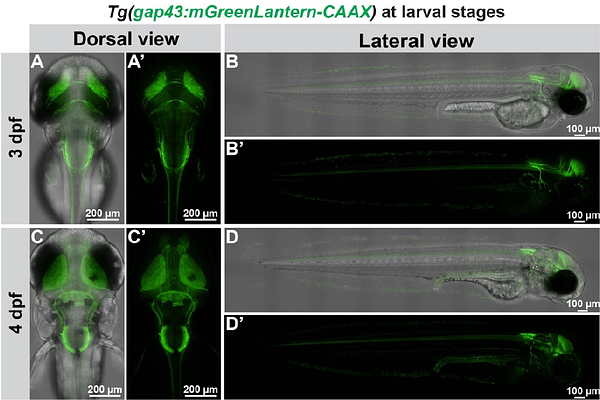See-through science: Danionella cerebrum as a model for neuroregeneration

See-through science: Danionella cerebrum as a model for neuroregeneration
Misyuk, M. K.; Austin, J. L.; Walechka, N. R.; Peterka, J. A.; Veldman, M. B.; Lam, P.-Y.
AbstractRebuilding functional neuronal circuits after injury in the adult central nervous system (CNS) is unachievable for many vertebrates. In pro-regenerative models, it is unclear how regeneration and re-wiring is achieved in the CNS over long distances. The size and opacity of the adult vertebrate brain makes it difficult to study axon topography and dynamic cellular interactions during long-distance axon regeneration. Here, we harnessed the properties of the small and transparent adult Danionella cerebrum for longitudinal in vivo imaging of retinal ganglion cell axon regeneration, correlating cellular events with functional recovery. Our results suggest that some axons regenerate along tracts of degenerating myelin debris. However, the topography of re-innervation is different after regeneration, suggesting that new axon tracts are created to restore functional vision. The D. cerebrum model provides a unique opportunity to visualize and experimentally manipulate the spatial and temporal events during CNS regeneration in intact adult vertebrates.